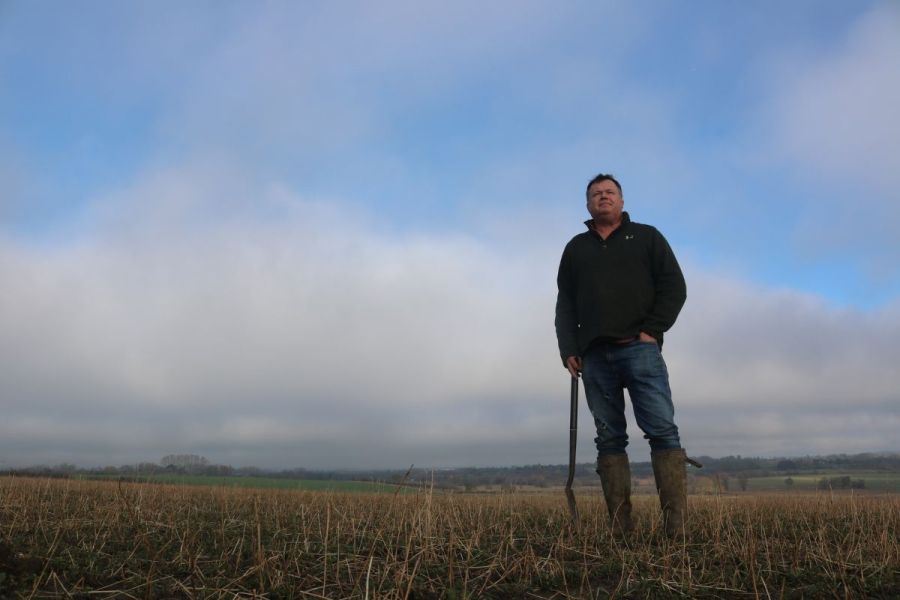How do you get to net zero? As voting gets underway for Climate Change Champion 2022, CPM finds out how two previous winners have evolved their businesses.
“The opportunities are profound if you get it right.”
By Tom Allen-Stevens
There’s a world of opportunities awaiting those who set themselves on the path to net zero. That’s the message from award-winning farmers who are heading up arable businesses around a climate-friendly future.
Al Brooks of Faccombe Estate, Hampshire, was voted arable Climate Change Champion of 2020 by CPM readers and NFU members, while Doug Wanstall of J Wanstall and Sons, Kent, earned the worthy accolade last year. Both businesses were already net sequesters of carbon at the time they were featured in CPM, and both have made considerable progress since.
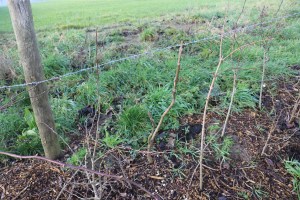
Opportunity for fast growth: Doug Wanstall’s Paulownia Cotevisa sapling, seen here in Feb 2021, is already almost 3m in height.
“Don’t sit back – the opportunities are profound if you get it right,” says Doug, who also runs Re-generation Earth, that acts as “a conduit between those companies and individuals who want to take responsibility for their residual emissions and farmers who can sequester them”.
“I have not yet come across a farming business that can’t get to net zero, and in every case, it will make the business more profitable,” he says.
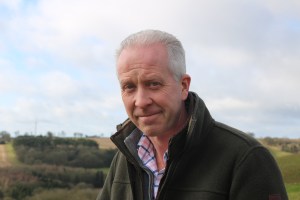
Al Brooks follows an “edge-to-edge asset approach”, with all aspects of the estate’s farming, forestry and other enterprises dovetailing together.
Al believes the progressive farmers who take the initiative will be the ones to benefit most. “You only have to open the pages of CPM to see the ideas currently leading the field. The opportunities are obvious and those who take advantage of them will swallow up the businesses of those who sit on their hands,” he predicts.
But fools rush in, he cautions. “Go at a pace, not a sprint. There’s a lot of rhetoric and it can be daunting. But at the heart of this drive to net zero are some simple principles any farm business can adopt to shape their own objectives.
“At Faccombe, we set ourselves clear targets and have worked progressively towards them. It’s an ever-evolving plan towards a circular economy over the entire estate and we learn as we go along.”
It’s advice that Doug echoes. “You can’t suddenly become a regenerative farmer by buying a direct drill, and it’s easy to manipulate the data to make results tell a story that may not be in the best long-term interests of your business,” he says.
“But there is plenty of good, independent advice for those who seek it. The first step is to understand where you are – establish a baseline – and then look for qualified help in setting targets and the pathways to reach them.”
So what do the two farmers have to say to the new team at Defra and how Ministers can help? “Do not undo all the good work your predecessors have done,” stresses Al. “Engage with farmers, pick up on the good ideas we’ve already brought forward and help us run with them. But for God’s sake, do not stop this progress towards net zero.”
Doug agrees. “Don’t stifle the entrepreneurial initiative farmers have already shown. Give us the tools to help us sequester carbon into our soils with confidence. Give us clear guidance on how you see carbon markets developing. It can be confusing to know how best to capitalise from an uncertain future, but a good government provides clarity.”
Since CPM visited the 485ha farming business in February 2021 he runs near Ashford, Doug has helped set up the UK Carbon Code of Conduct (UKCCC). This is a central set of standards that takes a holistic approach to help whole landholdings enter projects and benefit from restoring carbon.
“We set it up over three years with a group of stakeholders. It’s a not-for-profit entity that exists purely to ensure that its standards are continually developed and upheld and to give confidence that the carbon offsets it issues are robust,” he explains.
Doug points out that the Woodland and Peatland Codes, along with the imminent Hedgerow Carbon Code, provide the necessary confidence for those areas of sequestration. But unregulated gaps remain in much of what farmers can do to lower CO₂ levels, notably with their soils, that UKCCC aims to fulfil. “Ultimately our customers ask for it, and it’s in all our interests to ensure that carbon offsets can be relied on,” he adds.
On the farm, he’s been developing various novel ideas that both sequester carbon and build soil health. Lucerne, grown and sold for haylage as well as fodder for his 74-head Sussex beef suckler herd, has a deep root system that locks in carbon. “We have three on-going research projects with the University of Kent looking at how bugs, biochar and seaweed extract can both build soil carbon and encourage the natural processes that keep it there,” he says.
There’s also an agroforestry project underway, using Paulownia Cotevisa, a very fast-growing hybrid tree that can reach the height of a 40-year-old oak in just eight years. “We’ve only just established the field this year, while the specimen sapling we planted that was just a few inches high in February last year is already almost 3m in height.”
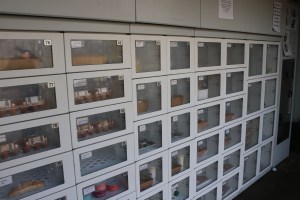
The laying hens that supply the self-service “Egg Machine” are fed insect protein from black soldier flies.
One particularly novel area of the business revolves around its 12,000 laying hens. These provide produce sold through a self-service farm diversification known locally as “The Egg Machine”. “We’re now working with InsPro and are farming black soldier flies. The main reason for coming into it was to provide a good alternative source of protein for our laying flock.”
But it’s the frass, the dung the flies create, that could provide a bigger interest. “It’s thought to have insecticidal properties, as well as being a powerful growth promoter. So we applied it to our oilseed rape this year as a look-see. We’ve noticed significantly less cabbage stem flea beetle damage as a result, so something to investigate further,” reports Doug.
At Faccombe, near Andover, recent energy price hikes have served to justify the policies pursued by this low-carbon community. As estate director, Al follows what he calls an “edge-to-edge asset approach”, with all aspects of the estate’s farming, forestry and other enterprises dovetailing together.
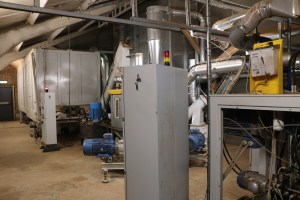
Demand has soared for the wood pellets, produced through Faccombe’s new processing plant from forestry material that used to go to waste.
The 1720ha of rolling chalk soils rise to 330m above sea level with 546ha of woodland. While the best timber is sold for log cabins and other construction uses, other forestry material that used to go to waste now provides around 2500t/yr of wood pellets, produced through the estate’s new processing plant.
Already a strong market, since CPM’s visit in February 2020, demand for alternative fuel sources has soared, reports Al, but the focus has remained on building the low-carbon community. The 35 properties in Faccombe village, which include the manor house, its own pub and guesthouse and a few commercial units, are gradually being converted away from fossil fuels. Electricity is fed to the community from the estate’s 500kW wind turbine that sits high on a hill, while barn rooves are clad in solar panels, putting another 250kW into the local network, with surplus peak output sold to the grid.
“We’ve put more efficient blades on the wind turbine that’s increased output, and there’s potential to add more solar. But we’re currently conducting an in-depth energy assessment,” explains Al.
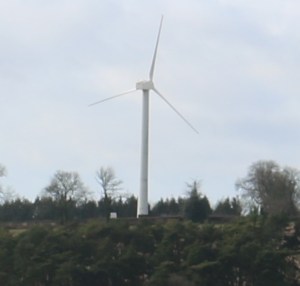
More efficient blades on the wind turbine have increased output, while Faccombe is currently conducting an in-depth energy assessment.
“The aim is to make full use of the energy we generate – match demand closer to supply. We’re looking at a joint venture to provide battery storage, but some solutions are more simple. A power-factor correction we’re now implementing makes more use of the power available, improving efficiency by 22%. It’s a step any business can take.”
A refurbishment program for the properties in the village, insulating and replacing windows, is bringing gradual improvement in EPC ratings. “While this doesn’t raise our income on either rents or energy, we’re doing a better job. We’ve also overhauled the water network over the past two years, making better use of the estate’s boreholes and reducing water usage by 45%,” says Al.
Gradual changes on the farming side have seen fertiliser use reduce and better use of organic manure. While the estate has stopped short of direct drilling, a Grange toolbar in front of the Väderstad Rapid drill has been rolled across all crops, gets them off to a good start and has allowed cultivations to be “vastly reduced”. The estate that was already sequestering over 2000t CO₂e per year two years ago has raised this by around 20%, reports Al.
“We want to get the job nailed on energy, which will take us a good year to 18 months, but the opportunity is to be entirely home generating. We’ve set strategic and achievable targets and work towards these at a pace that’s realistic. Everything comes at a cost, but we’re focused on the longer-term gain,” he concludes.
Both Al and Doug were supported by Interagro, one of the sponsors of Climate Change Champions. Sarah Ferrie of Interagro notes that both farmers “are of a similar mindset” on climate change. “They recognise the net zero benefits of the changes they’re bringing to their business, but they’re on this journey because it also makes financial sense. Both have a clear idea of what the circular economy means within their business, and how enterprises complement each other.
“They also see the opportunities for the wider farming community, and that’s never been more important. There is so much uncertainty and volatility at present with input prices and on commodity markets. What underlines all Climate Change Champions is that they’re putting into practice measures that make the business more resilient, particularly through building soil health, reducing reliance on synthetic inputs and lowering energy usage. These are steps any business can take,” notes Sarah.
- CPM would like to thank the sponsors of Climate Change Champions – BASF, BKT, Interagro, Lloyds Bank, Small Robot Company and Trinity AgTech – and also NFU, for its support of the initiative.
Vote now for Climate Change Champion 2022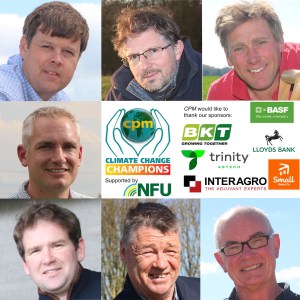
There’s still time to vote for whom you feel should be the UK’s arable Climate Change Champion of the year. The initiative, supported by NFU, has been running in CPM throughout 2022.
This has detailed the experiences of seven growers – thought leaders who have already started their journey to meet the challenging target of net zero emissions by 2040. They have the ideas, the progressive outlook and the determination to shape positive change.
All seven of the contenders have also been invited into top-level discussions on climate change, fronted up by NFU deputy president Tom Bradshaw. The round-table event, timed to coincide with COP27 next month, will develop strategies and practical solutions to climate change for the arable sector.
The finalists are:
Robin Aird, Charlton Park Farms, Wiltshire, who bases his approach to the estate’s natural assets on a solid grasp of the underlying figures.
Guy Eckley, Eckley Farms, Kent, who’s proving that the production of healthy food goes hand-in-hand with the drive to net zero.
Toby Hogsbjerg, The Wicken Farms Co, Norfolk, has set about securing a long-term future for the estate’s pivotal root crops from its fragile soils.
Tom Jewers, GD Jewers & Son, Suffolk, constantly searches for the next step and particularly new technologies that will deliver both productivity and carbon benefits.
Michael Kavanagh, DGF & MAM Thompson Farms, Shropshire, has embraced regenerative agriculture practices, and plans to capitalise on his natural capital gains.
Robert Moore, Agricycle, Lincolnshire, has built a nationwide business around helping farmers recycle and ties this to restoring biodiversity to the family farm.
John Pawsey, Shimpling Park Farms, Suffolk, leads new ideas on progressive organic arable systems and avidly exchanges knowledge on enriching farm biodiversity.
Now it’s your turn to decide which of them should be awarded the accolade of Climate Change Champion 2022. A summary of their achievements and links to full articles can be found on the Climate Change Champions landing page. From there, take the link to the survey, or go direct and vote now.
Voting ends on 1 November 2022 and the winner will be announced shortly after.
Rural voices rally around COP call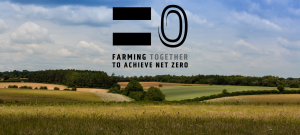
Countryside COP2 took place online from 10-14 October, organised by the Agriculture and Land Use Alliance, which is made up of representatives from across rural interests. Ahead of COP27, that convenes at Sharm el-Sheikh, Egypt on 6-18 November, Countryside COP allows the UK rural community to come together and showcase the opportunities available and the contribution already being made to reach net zero.
Now in its second year, the event gave a platform to a number of leading voices as well as emerging campaigns, strategies and practical solutions for farmers. Highlights included a discussion workshop from ADAS’ YEN Zero looking at the role of crop productivity in reaching net zero. Advice was given from NFU Energy experts on how to implement small-scale renewable energy projects on farm. And Jake Fiennes of the Holkham Estate and Glenn Anderson of Wendling Beck gave their perspectives on promoting wildlife and biodiversity in Norfolk.
Presentations and videos from the event can be found on the CFE website.
This article was taken from the latest issue of CPM. For more articles like this, subscribe here.

